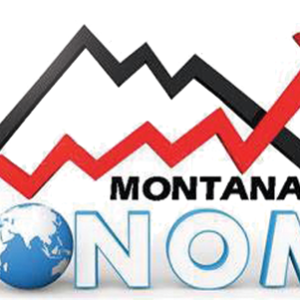By Evelyn Pyburn
It’s a new era for ice hockey in Billings, Montana – in fact for all ice sports.
With Signal Peak Energy’s $6 million donation, this past month, along with the addition of many other community donations, a groundbreaking ceremony was held last Wednesday to build a $12 million Signal Peak Energy Arena, which will feature two-sheets of ice for hockey, curling, figure skating, etc.
On a bright sunny and very warm day, hundreds of people and numerous dignitaries, including Governor Greg Gianforte, were on site to commemorate the launching of the new facility, which will eventually include a second phase of four basketball courts. The new sports complex is located on property the city purchased a few years ago, next to the Amend Park Soccer Complex, near the corner of South Billings Boulevard and King Avenue East.
The two-sheet ice project is a public – private collaboration of The Yellowstone Ice Foundation and the South Billings Urban Renewal Association, (SBURA), a tax increment finance district funded by property taxes from business growth in the vicinity of the intersection of Interstate 90 and South Billings Boulevard. SBURA donated $4.6 million.
The goal of the Yellowstone Ice Foundation, which will operate the new facility, is to build it without further reliance on public dollars. Over a year ago, City of Billings’ voters rejected a $143 million bond aimed at building and maintaining a full scale recreation facility, in the same location. That effort followed years of effort, by hockey and other ice sports participants to find a way to increase capacity for their growing sports, since they were out-growing the existing Centennial Arena, which has been the only ice arena in Billings since the mid- 70s.
The new state-of-the –art facility will not only serve the youth of today but will “drive long-term economic success and create opportunities for athletes of all ages,” heralded Parker Phipps, Signal Peak president & C.E.O. Signal Peak operates Montana’s only underground coal mine north of Billings on the border of Yellowstone County and Musselshell County near Roundup. Phipps is also president of the Yellowstone Ice Foundation Board.
Alex Picicci, Signal Peak senior accountant and secretary-treasurer for the Yellowstone Ice Foundation, also spoke to the crowd about the potential for ice sports in Billings.
The crowd especially enjoyed a historical rendition about hockey in Billings, from a man referred to as the Godfather of Hockey in Billings, Joe Studiner.
There was no hockey in Billings when Studiner arrived in the city over 50 years ago, which made him inclined to think he wasn’t going to remain in the city very long. But when he heard that there was an effort to form a youth team, he arrived at the gathering ready to serve as a coach and became a leader for the sport in Billings and throughout the state. As strange as it might seem for a city located in the north, the sport’s biggest struggle – with only outdoor rinks – – was that it was often too warm to have ice.
Studiner is more than pleased with the prospect of having an indoor rink with two sheets of ice.
The 69,996-square-foot complex will have capacity for about 2,940 spectators, and is expected to contribute to future economic growth of sports tourism for Billings, which has been championed by Visit Billings as part of the Billings Chamber of Commerce.
Chamber of Commerce President/ CEO, John Brewer, underscored the growing importance of sports tourism to the local economy. Billings Mayor Bill Cole, further emphasized the potential for the Billings economy, stating, “Tourism is a powerful economic driver.” He noted that each year, the city hosts 2.6 million visitors, generating $621 million in spending.
The Billings Tourism Business Improvement District has announced the commitment of $1 million over the next three years to support Signal Peak Energy Arena.
That announcement followed an earlier one from Pepsi-Cola Bottling Company of Billings of a $500,000 contribution, which secured the naming rights for the building’s lobby.
“Pepsi-Cola Bottling Company is well-known for their commitment to the Billings community,” said Phipps. “Pepsi’s donation brings a legacy of public support to the state-of-the-art ice arena.”
Tom Dimich of Pepsi-Cola Bottling explained. “Our involvement goes beyond supplying refreshing soft drinks; we’re eager to invest in a project that will do so much for the families and athletes in the region.”
According to Yellowstone Ice Foundation they have has raised over $11 million of their $16 million goal.
Another $1 million was donated by the Larson Family. First Interstate Bank has contributed $45,000. Other contributions have come from KE Construction, KOA, Billings Amateur Hockey Leagues, Tom and Joan Scott Foundation, Northwest Pipe Fittings, BNSF Railway, Western Security Bank, Altana, The Clark-O’Rourke Family, Weave, MCAHA, The Seedhouse Family, Billings Overhead Door Co., Edwards & Culver, The Wald Family, Mattress King, Intermountain Health, Collaborative Design Architects, A & E Design, and Allegra.
“This project is a win for Billings and for Montana kids,” Gov. Gianforte said. “Thanks to strong community partners and Signal Peak Energy, we’re investing in a stronger future for the community and for young athletes looking to grow, compete, and have fun.”
Dick Zier, who heads SBURA, also spoke to welcome the ice arena. He said that they expect the addition of a $20 million basketball court to be ready in a little more than a year.
The Signal Peak Energy Arena is expected to be completed in April 2026.



